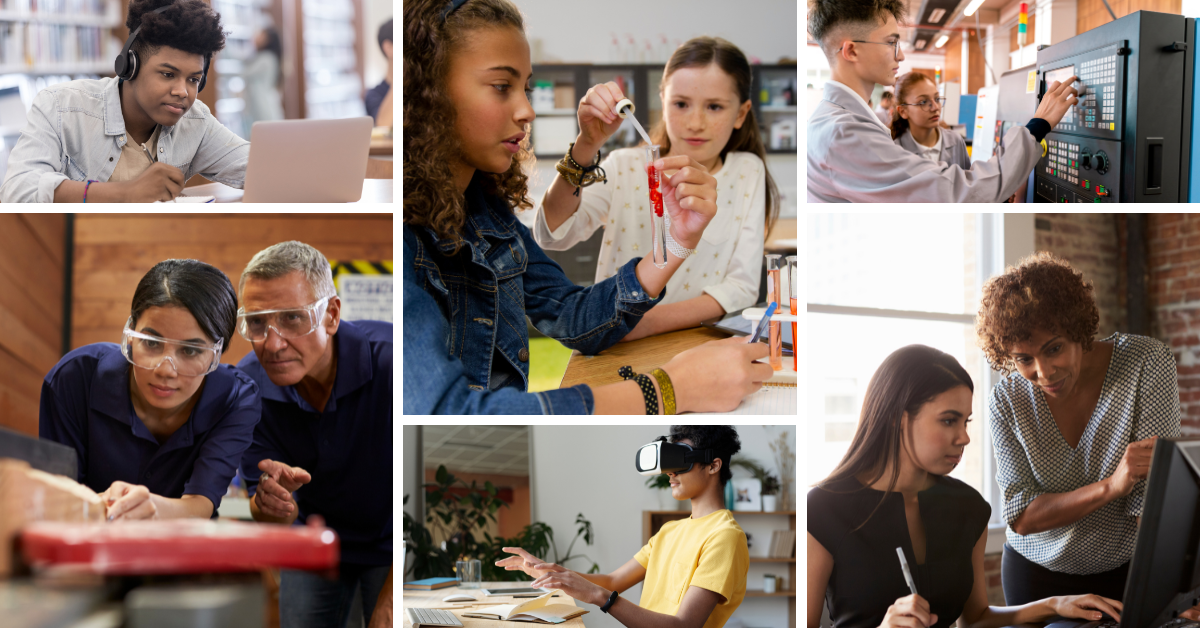Over half of U.S. high school graduates say school didn’t prepare them for making decisions about careers. To-date, there are only pockets of success in the U.S. education system where kids are being guided to understand how their interests and skills connect to purpose-backed careers. Scaling that success remains an elusive feat.
At ASU+GSV Ashley Hemmy, ASA’s previous Director of Corporate Social Responsibility, was joined by David Miyashiro of Cajon Valley Schools, Taylor Shead of STEMuli Studios, John Rethans of YouTube, and JP Michel of SparkPath. Our task? To elucidate the roles different people and organizations play in helping to prepare kids for those critical next steps. And while it clearly “it takes a village” to get it right (and I think all panelists would agree), each panelist had a different point-of-view about who should take the lead in getting kids career ready. Teachers? Kids? Entrepreneurs?
JP, for example, felt that the educator really should take the lead and serve as the central convenor of the different people and entities that make up the ecosystem that’s required to help a kid connect “learning to earning.” Taylor explained that it’s the job of innovators to ensure kids have the stimulation and resources they need to become career-ready. And Jonathan – informed by working at YouTube, where self-made content is king – really felt it’s down to the individual student to take the reins and take control over their learning journey. Our perspective? They’re all right and these are all equally weighted answers, but the shift to smarter career exploration and readiness programming in schools won’t happen without working together. Career exploration can and should be teacher-led, student-led, and enabled by the brightest innovators, businesses and entities in our communities.
The conversation turned to the specific programs that school districts, communities, and innovators are using to bring greater levels of career readiness to kids. Ashley explained that, through ASA’s work in the Commonwealth of Massachusetts where we have supported 14 districts to launch or expand their own middle grades career readiness programs, four different models of promise emerged. All of them are educator-led: a whole-school approach that incorporates community connections, bringing professionals into the school to inspire; a STEM programming model where schools create dedicated Makerspaces and offer experiential opportunities around entrepreneurship and other professional avenues; a district-level implementation of cross-curricular project-based learning programming; and finally engineering exploration opportunities for students that spans different subject areas.
David shared that his district launched exploration programming starting in kindergarten, with students able to experience six careers and participate in project-based learning each year. This means that, by the time a student in his district leaves middle school, they’ve experienced at least 50 career explorations! How did his district accomplish this? Not in isolation. They did it by working together with the Chamber of Commerce, Department of Defense, the fire department, and beyond. He shared that, “Everyone has a need for workers, and we’re now preparing kids for jobs right here in their backyard.” JP explained that, for kids who aren’t fortunate enough to go to a district like the one described above, digital programming – like that used by SparkPath – can help get kids inspired and motivated through challenge-based learning. That is, asking students not to pick a career, but to pick a challenge or problem to solve. JP shared that, “A challenge could be improving mental health or increasing sustainable energy. Once [a student] picks something motivating, they can work backwards to find what companies are increasing sustainable energy in my city, who works there, and what did they have to learn to be able to do that? So it starts with the challenge first.”
John gave insight into YouTube’s approach to helping kids firm up their postsecondary plans. As a platform with 2 billion users – nearly all of whom are using it to access information – their opportunity to inspire and connect kids with careers through digital content is unrivaled. Working together with Arizona State University and their partner CrashCourse, YouTube has “created three types of content. The first is called “How to College ” and is for kids who have questions about college and maybe don’t have a parent they can ask. The second piece is called Fast Guides, and helps kids understand postsecondary courses of study and what’s needed to succeed. And finally, their foundational courses (built together with ASU) enable someone to take their first step by enrolling in a public university course for a very low fee and earning transferable college credits.
And Taylor shared how their gaming platform STEMuli sits at the intersection of AI and education, borne from a lack of student engagement in classrooms. Taylor explained that, “I wanted to do something nobody else in the world was doing. I wanted to build school in a video game. I wanted to make it so educational that when it’s time to come to dinner, the parents are pulling their kids from their education…The game needs to be so fun, and it doesn’t matter how long the student is playing it, they’re invested in playing this game, just like our kids have been playing The Sims, Fortnight, and Minecraft for tens of years.”
All of the panelists have exceptionally exciting – some might even say radical – approaches to getting kids more engaged in and inspired about their educational journeys and their futures. All of them understand that the magic formula for doing so involves a recipe of community collaboration, relevance (that is to say that the learning experiences need to be relevant to the lives and interests of students), student empowerment, and an ability to deliver these experiences at scale. At ASA, that is exactly what we are working towards. We were thrilled to host these panelists and hear what they’re up to because it reinforced one undeniable truth: there are exciting and promising times ahead for our schools, communities, and kids.
Watch the whole session here.



